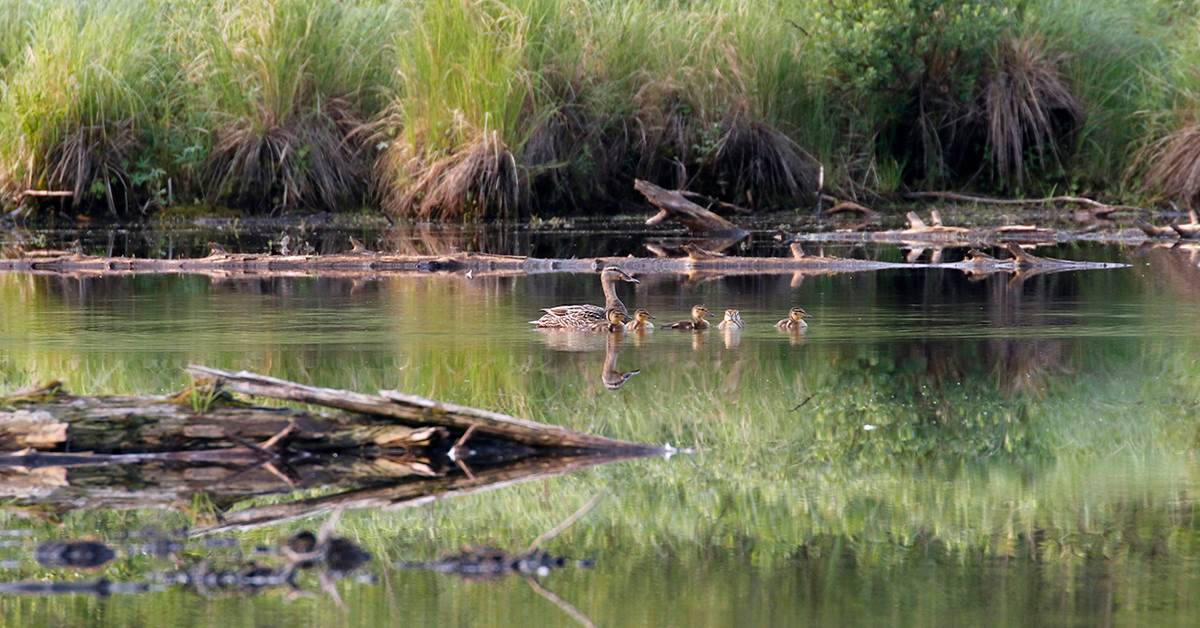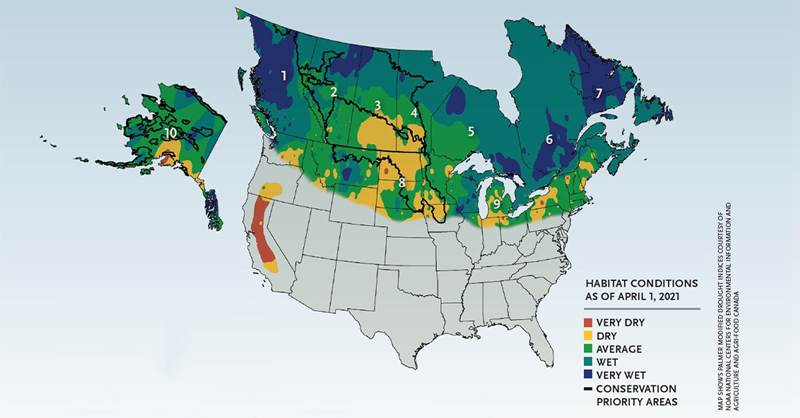Early Spring Habitat Outlook 2021
An overview of wetland conditions across key waterfowl breeding areas
An overview of wetland conditions across key waterfowl breeding areas

© Michael Furtman
By DU Field Biologists

Runoff from a good snowpack and ample rainfall along the coast should keep wetlands filled across much of the province this spring. The only exception is the Peace region in the northeast, which is drier than the rest of the province.
Although much of this province received below-average winter snowfall, existing soil moisture and carryover water should produce average wetland conditions for breeding waterfowl in many areas. However, more spring precipitation will be needed to maintain wetland habitats through the breeding period.
Much of this province received below-average winter snowfall, limiting potential for runoff and wetland recharge in many areas. Conditions are especially dry in the southeast and east-central regions, where water levels were already very low going into winter. Slightly better conditions exist in central and western portions of the province, where early winter snowfall improved soil-moisture conditions.
Following a dry fall and winter, spring runoff will likely not be enough to replenish depleted wetland basins. On a positive note, winter wheat acres planted last fall nearly doubled in the province from the previous year, increasing nesting cover for early arriving waterfowl this spring.
Average wetland conditions in western Ontario and above-average conditions in the rest of the province should provide good habitat for breeding waterfowl. With mild temperatures, many waterfowl have already returned to the southern part of the province.
With above-average soil moisture levels going into winter and a gradual snow melt this spring, good to excellent wetland conditions are expected in this province.
Mild temperatures have created open water in coastal estuaries and creeks, providing good habitat for returning waterfowl. With reduced snow and ice cover and an early spring, habitat conditions are generally favorable for breeding waterfowl.
Snowpack across the US Prairie Pothole Region was far below average this winter. Moderate to severe drought conditions prevail across much of the Dakotas and eastern Montana, and below-average wetland conditions are present for breeding waterfowl.
Precipitation across the Great Lakes and the northeastern United States has been below average over the past six months. Timely spring rainfall is needed to improve habitat conditions for breeding waterfowl in these regions.
Severe drought persists across California's Central Valley and much of the Great Basin, resulting in poor wetland conditions across much of the West. In Alaska, runoff from a heavy snowpack is expected to provide good to excellent wetland conditions for breeding waterfowl.
Ducks Unlimited uses cookies to enhance your browsing experience, optimize site functionality, analyze traffic, and deliver personalized advertising through third parties. By continuing to use this site, you agree to our use of cookies. View Privacy Policy